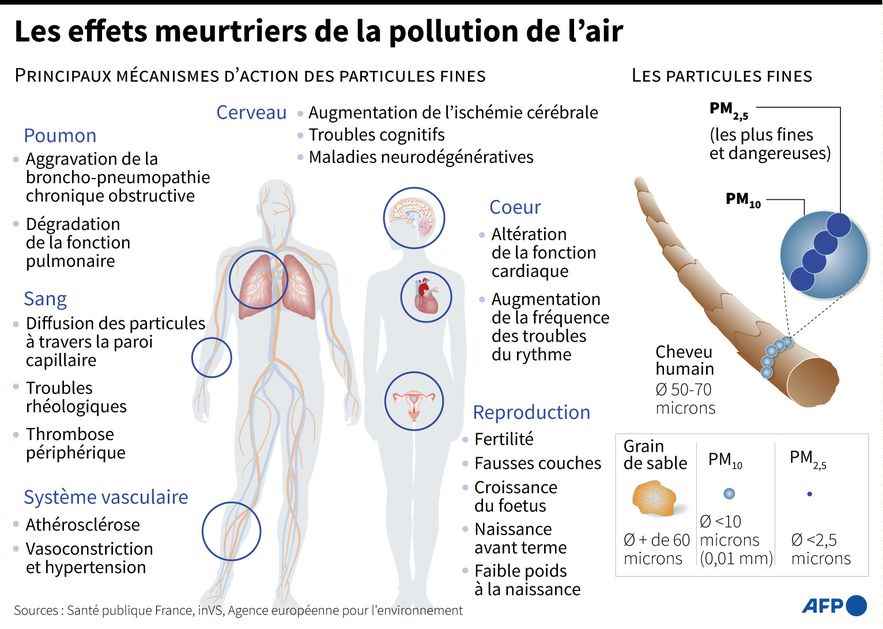Fine particle pollution alert. Twenty-five towns located to the east of a Rennes – Marseille line are currently particularly affected by an episode of pollution, according to the Atmo France federation, which brings together the national network of air quality monitoring associations. The index is classified as “bad” in several cities such as Paris, where a peak is expected this Tuesday February 14, in Arras, Dijon, Grenoble and Tours and even “very bad” in Strasbourg.
The Atmo index indicates that the air quality is poor in more than twenty cities in France, on February 14, 2023.
© / Screenshot from atmo-france.org
The prefectures have put travel and speed restrictions in place in an attempt to limit fine particle pollution, which has an impact on our health. The Paris police headquarters thus renewed on Monday February 13 the measures to reduce the authorized speed by 20 km / h and to ban the use of individual wood heating for this Tuesday in Ile-de-France.
The maximum authorized speed remains lowered to 110 km/h on the motorway, to 90 km/h on roads normally limited to 110 km/h and to 70 km/h on those usually limited to 80 km/h or 90 km/h. h. Heavy goods vehicles over 3.5 tonnes are obliged to circumvent the area via the Ile-de-France ring road.
Traffic is restricted in Lyon: since Monday morning, only zero-emission cars and those equipped with a Crit’Air sticker one or two can circulate. The Rhône valley has been placed on red alert, the Ardèche prefecture said in a press release on Monday.
A “persistent” episode linked to the weather
As franceinfo reminds, until the end of this episode of pollution, it is forbidden to use wood as individual supplementary heating, it is necessary to control the temperature in buildings, or to lower your speed by 20 km/h on roads limited to 90 km/h or more. The industrial sector must stop its most polluting activities. Dust-generating sites must also be postponed until the end of the pollution episode.

The health effects of air pollution are marked.
© / VALENTINA BRESCHI, ALAIN BOMMENEL, SABRINA BLANCHARD / AFP
This episode of pollution is “persistent” due to a “winter anticyclonic presence combined with night frosts” which “participate” in “the accumulation of pollutants in the lower layers of the atmosphere”, indicates Atmo. The episode could last a few more days even if with the expected rise in temperatures, the pollutants should disperse at altitude.
Rain and wind can help improve air quality in some cases. “These two phenomena promote the dispersion, mixing and leaching of pollutants”, notes the government platform Recosanté. “Precipitation, generally associated with an unstable atmosphere, makes it possible to reduce the concentration of pollutants in the atmosphere. We speak of ‘leaching’ of the atmosphere. Regarding the wind, it is its strength and direction that influence the quality of the air. The lower the wind speed, the more pollutants are likely to accumulate”, explains Recosanté.
Particle emissions are “two to three times higher in winter than in summer, especially in the residential sector, due to heating”, explains on his website Airparif, the body responsible for monitoring air quality in Île-de-France. Car traffic is also largely responsible for the phenomenon. “Half of fine particle emissions are due to the residential sector and more than a quarter to road transport”, relates the organization.
